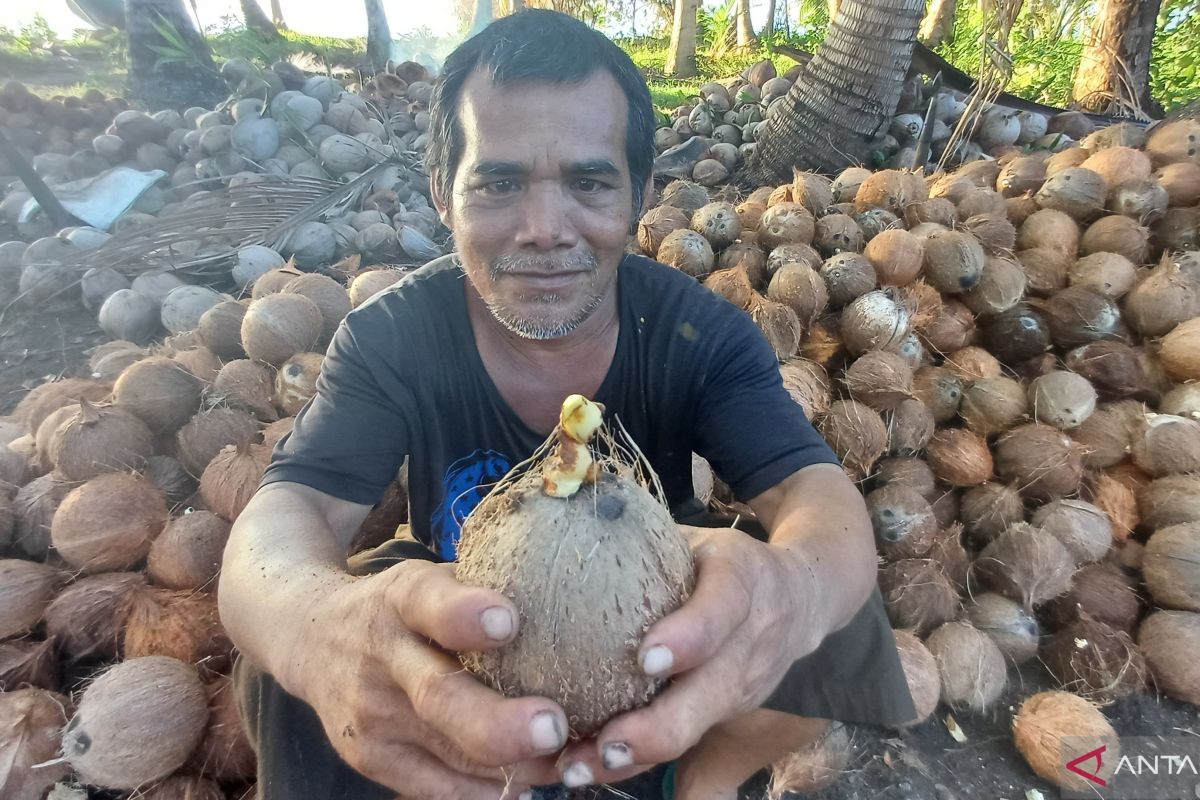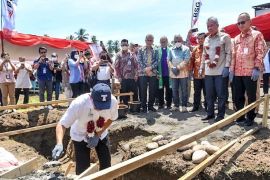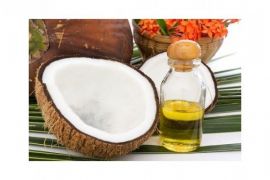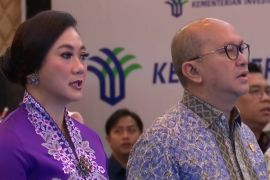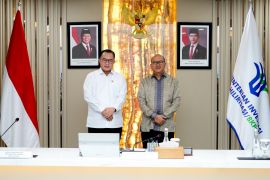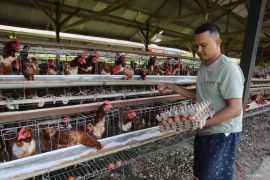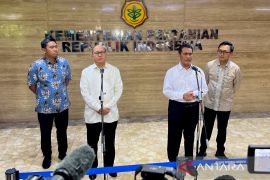No wonder then that its islands, which number in the thousands, are home to vast coconut plantations.
Renowned globally as a symbol of the tropics, the coconut tree is often called the tree of life since nearly every part of the tree is useful.
Coconut tree trunks, for example, can be used for simple home construction, while coconut leaf stalks can be turned into sturdy brooms. In addition, the sap of coconut flowers can be used to make sugar.
Most people would agree that the fruits themselves are the most valuable part of the plant.
Besides their refreshing tropical taste and flesh that can be consumed directly, the fruits can also be used to produce coconut milk, coconut oil, coconut flour, and copra.
This multi-functionality alone makes coconuts a strategic and vital commodity — not just for the livelihoods of farmers but also for the economy.
Even amid the uncertain global economic climate, Indonesia’s coconut exports have continued to thrive thanks to government initiatives, with Indonesian coconuts emerging as yet another symbol of the country’s agricultural strength on the global stage.
Data from Statistics Indonesia (BPS) has shown a significant rise in the value and volume of national coconut exports over the last three years.
From US$65.6 million in 2022, the value of coconut exports rose to US$75.33 million and US$113.59 million, respectively, in 2023 and 2024.
This positive trend reflects both steady global demand and the strong competitiveness of Indonesian coconuts.
As of April this year, the export value of coconuts with the HS code 08011200 (endocarp) had reached US$62.63 million, with China standing out as the top buyer, importing US$52.25 million worth of the tropical fruit between January and April.
This increase in value was closely tied to the rising demand for coconuts and their derivatives to make all sorts of products, ranging from coconut milk coffee, coconut-flavored ice cream, and snacks to innovative cosmetics.
Related news: Indonesia develops tech to get bio-jet fuel from coconut oil
Meanwhile, Vietnam and Thailand have also been sourcing more and more coconuts from Indonesia as raw materials for their food industries. However, their contribution is far smaller compared to China.
Explaining this trend, Agriculture Minister Andi Amran Sulaiman said that global markets are increasingly seeking Indonesian coconuts. Therefore, China and other countries are going full throttle in importing them.
The minister’s statement reflects Indonesia’s vast potential to play a major role in global supply chains for high-quality coconuts.
To fully capitalize on this opportunity, the government has remained consistent in boosting domestic coconut production. According to the BPS, Indonesia produced 2.87 million tons of coconuts in 2022, followed by around 2.9 million tons in both 2023 and 2024.
Though there’s been no decline, the government has noticed stagnation over the past two years — partly due to aging coconut trees, which naturally yield less fruit.
For this reason, the government has allocated a budget of Rp750 billion (around US$46 million) this year for a coconut plantation rejuvenation program.
The program will involve the provision of superior seeds, the expansion of cultivation areas, productivity training for farmers, and the procurement of modern tools for better plantation management.
The initiative is expected to not only boost production but also further enhance Indonesian coconuts’ competitiveness and improve farmers’ welfare.
Minister Sulaiman stressed that the Ministry of Agriculture is working closely with regional governments and business actors to cement Indonesia’s position as the world’s coconut powerhouse.
Related news: Minister Rosan says coconut downstreaming to create jobs, added value
Downstreaming
To unlock the full economic potential of coconuts, which Indonesia still largely exports as raw fruit, the government has decided to expand its downstreaming policy to the tropical fruit.
Under the policy, raw coconuts will be used to make processed products of higher-value such as coconut oil, coconut milk, and coconut flour.
In addition, the government has launched programs to help coconut farmers expand their market reach and protect them from losses caused by price fluctuations.
With around 3.33 million hectares of coconut plantations, Indonesia is one of the world’s largest coconut producers.
Blessed with the ideal climate and fertile soil, the country has all the prerequisites to reign supreme in the global coconut market.
To tap this potential, consistency in rolling out strategic initiatives is key.
Specifically, Indonesia must push ahead with plantation rejuvenation and downstreaming to build a sustainable coconut industry that delivers maximum benefits for the economy.
To ensure the success of these efforts, a supportive ecosystem will need to be created through close collaboration between the government, industry players, and farmers.
That way, Indonesia will not just be known as another coconut producer and exporter, but as a true hub of global coconut supply chains.
This would allow the so-called tree of life to make an even bigger contribution to the national economy.
Supported by the right strategies, Indonesia’s ambition to be the king of coconuts would be well within reach.
Related news: RI seeks to boost coconut downstreaming cooperation with Sri Lanka
Editor: Rahmad Nasution
Copyright © ANTARA 2025
